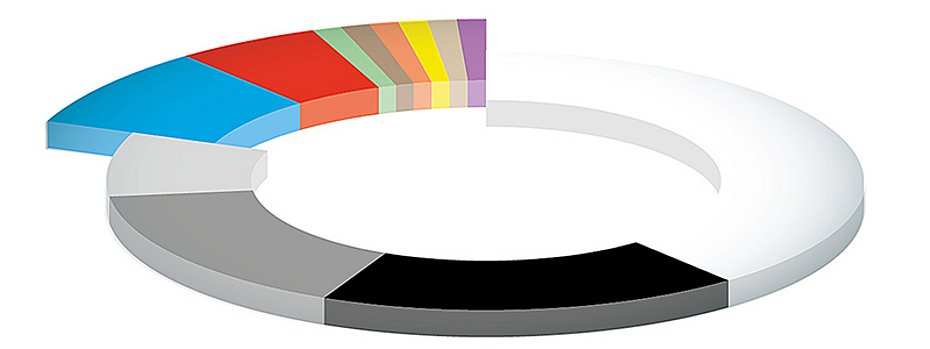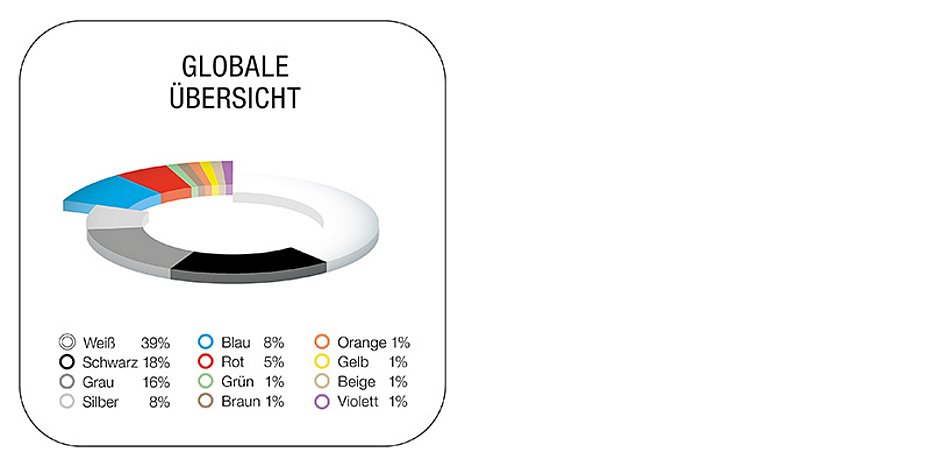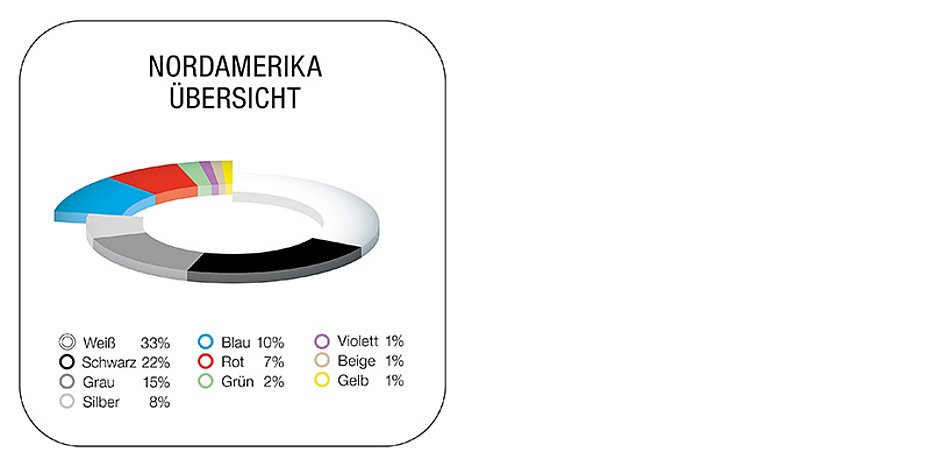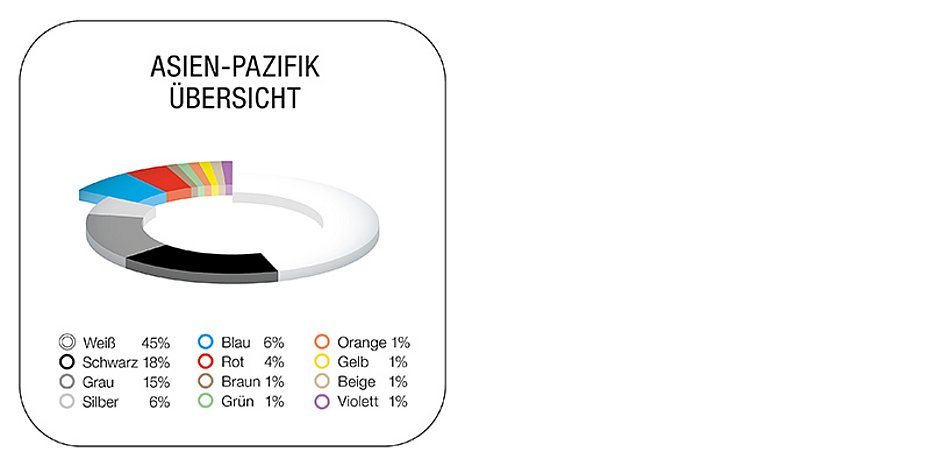As in recent years, achromatic shades dominated the global automotive market in 2022. However, in the Color Report for Automotive OEM Coatings from BASF's Coatings division, designers noted that the spectrum for automotive hues is expanding, with colors such as yellow, orange, green and violet now capturing market share. Despite the color shifts, the achromatic shades - white, black, silver and gray - continued to be used to paint most passenger cars produced in 2022. Due to their classic and timeless beauty as well as their high resale value, white-painted cars remain the most popular.
When buyers did not choose achromatic shades, they often opted for blue or red. While these two color spaces are still very popular, other chromatic colors such as yellow, orange, green and violet are gaining market share in most regions of the world. This shows that BASF's customers - automotive manufacturers - are offering a broader and more diverse color spectrum than before. The data in the report also shows that automakers were producing more vehicles again after the global pandemic and regional supply chain challenges.
EMEA: More colorful, although the two most common shades also gained shares
Europe, Middle East and Africa (EMEA) saw increases in the two most popular shades - white and black - and losses in gray and silver. At the same time, the region became more colorful. Blue continues to lead chromatic shades in EMEA, but both blue and red lost market share. Car buyers showed a preference for orange for the first time. Yellow, brown and green each gained a few percentage points.
"White and black increased this year, but the most important thing is the variety of chromatic hues," says Mark Gutjahr, head of automotive color design, EMEA. "When you add the market shares of yellow, orange, brown and green, you see more hues and variety, reflecting more nuance in the color palette and a breadth and depth of hues that has evolved over the last year or two."
North America: More chromatic shades like violet
North American car buyers have fewer choices of chromatic shades. However, that doesn't mean they are opting for less chromatic cars, vans or SUVs. Blue and red are still dominant, but the region is more colorful than before, with green, yellow, purple and beige showing up more often.
Blue still tops the list, and the gap between blue and red is widening as blue increases its popularity. Achromatic shades such as black, gray and silver have lost some market share, especially for larger vehicles. As a result, earthy shades such as beige, brown and green gained. Purple gained market share as car buyers' preferences have changed. "If you look at the heavyweights in chromatic hues, blue and red are at the top. But as people turn more to nature, natural hues like green, yellow, purple and beige are becoming more prevalent," says Liz Hoffman, head of design, Americas. "Car buyers are also looking for a vehicle color that expresses their positive attitude."
Asia-Pacific: Increase in gray tones increases proportion of achromatic tones
As in other regions of the world, BASF's designers saw that white was the most popular shade in Asia Pacific. In the foreground this year is the increase in shades of gray, which indicates a new era in the automotive industry and the change in values and habits of car buyers.
Although the overall volume is not very high, brown, green and purple are all consistently popular. It will be a long time before they replace white as the most popular hue, but currently they contribute to the impressive color diversity in Asia Pacific. This is particularly true for small cars and electric vehicles, which are sold in a wider range of colors. Gray has gained about six percentage points in popularity, taking market share from blue, red, gold and brown. "Gray is more attractive and popular than ever. Buyers continue to strive for uniqueness and individuality with achromatic shades," says Chiharu Matsuhara, head of design, Asia Pacific. "In the market, some shades of gray with blue or purple shades, solid effects and additional pearl effects are gaining acceptance, showing great diversity in the color space."
South America: The region with the lightest hues, as white, silver and beige dominate
In the past, South American car buyers tended to choose more traditional and less flashy colors. As in other regions, white is by far the favorite, and gray is ahead of black among achromatic shades. Among chromatic colors, red and blue remained stable, while brown gained some market share. These shades were most likely to be chosen for smaller vehicles. Larger cars and SUVs had the highest share of achromatic hues, including new and varied effects for grays on larger cars.
"South America is still a conservative region. In South America, when you buy a vehicle, you may not have the same variety of hues, but within each color space, there are really exciting and different effects," said Marcos Fernandes, director, regional business management, Automotive Coatings South America.
With the BASF Color Report for Automotive OEM Coatings, BASF's Coatings division presents a global analysis of the color distribution of passenger cars in 2022 (OM-3/23).
Contact
BASF Coatings
Glasuritstraße 1
48165 Münster (Germany)
Tel. +49 2501 14-0
www.basf-coatings.com






